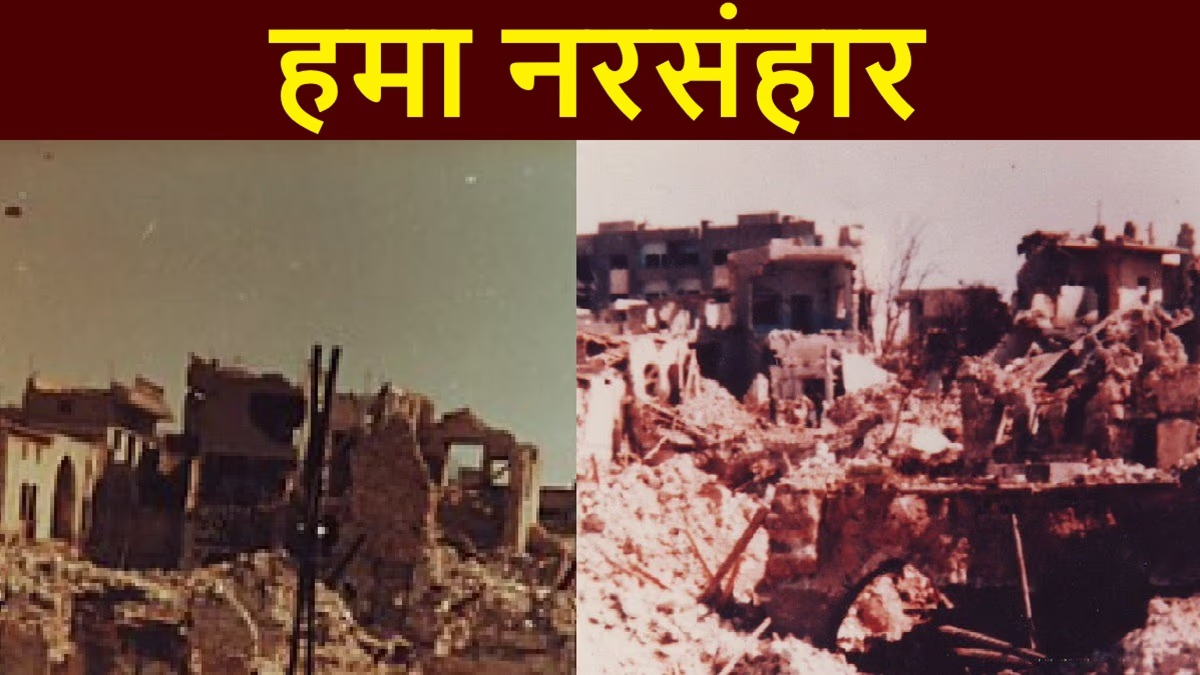Hama Massacre 1982:
The infamous Hama Massacre was ordered by Hafez al-Assad, Bashar al-Assad's father who had sought refuge in Russia, resulting in the death of over 30,000 people in 1982. This tragedy unfolded following a Sunni uprising by the Syrian Muslim Brotherhood against al-Assad's regime. The massacre stands as a pivotal and tragic incident in modern Middle Eastern history, leading to significant violence and political upheavals in Syria.
Tensions Between Government and Opposition
This massacre is recorded in the dark pages of history, occurring during Hafez al-Assad's presidency. The event was fueled by tensions between the Sunni-dominated opposition, particularly the Syrian Muslim Brotherhood, and the secular, Alawite-dominated Ba'athist government.
Uprising Began in February 1982
In the late 1970s and early 1980s, the Sunni Muslim Brotherhood targeted government forces, leading to increased uprisings. The conflict escalated to a large-scale rebellion in Hama, a stronghold of Sunni opposition. In February 1982, the Brotherhood initiated a massive rebellion in Hama, targeting government officials and military bases.
27 Days of Bloodshed
In response, Hafez al-Assad ordered a military campaign led by his brother, Rifaat al-Assad, to crush the rebellion. The city was relentlessly bombarded with artillery and airstrikes. For nearly 27 days, from February 2 to 27, 1982, the Syrian Arab Army used tanks and heavy artillery to lay siege to Hama, devastating the area and trapping many civilians in the crossfire.
General Rifaat al-Assad Led the Charge
The siege of Hama was orchestrated by the Syrian Arab Army and paramilitary forces under the command of General Rifaat al-Assad, aiming to suppress the Muslim Brotherhood's uprising against the Ba'athist government. The Sunni Muslim groups, including the Brotherhood, initiated a campaign in 1976, which was harshly crushed by General Rifaat's forces, leading to a brutal anti-Sunni massacre in Hama.
Communication and Basic Supplies Cut for Three Months
Prior to the operation, Hafez al-Assad ordered Hama to be isolated from the outside world. A media blackout was enforced, with communication, electricity, and food supplies cut off for months. Western diplomatic reports initially estimated 1,000 casualties, but subsequent estimates varied. According to Robert Fisk, who was present during the massacre, the death toll was around 20,000, while the Syrian Human Rights Committee and SNHR estimated the number at 40,000.
Plunder, Destruction, and Looting
Robert Fisk reported that indiscriminate bombing devastated much of the city, with most casualties being civilians. Patrick Seale, reporting for The Globe and Mail, described the operation as a fortnight of killing, destruction, and looting that shattered the city and left at least 25,000 residents dead.
This massacre was driven by sectarian hatred against Hama's Sunni community. The memory of the massacre remains a significant aspect of Syrian culture, evoking strong emotions among Syrians even today.
Dire Consequences
While exact mortality estimates vary, it is generally believed that over 30,000 people, including numerous civilians, were killed in the massacre. Thousands were injured or displaced, and the city suffered extensive destruction. The massacre effectively crushed the Muslim Brotherhood's uprising, a critical opposition force in Syria.
Hafez al-Assad's Legacy as a Ruthless Leader
The Hama Massacre cemented Hafez al-Assad's reputation as a ruthless leader willing to go to any lengths to maintain power. This incident instilled widespread fear among Syrians, resulting in decades of subdued dissent and protest. International condemnation followed, but no significant action was taken against Hafez Assad's regime.
Conflict Steeped in History Since 1940
The Ba'ath Party of Syria advocated ideologies of Ba'athism, Arab nationalism, and Arab socialism. The party had clashed with the Muslim Brotherhood since the 1940s, which promoted Sunni Islamist ideology. Both groups held fundamentally opposing views. The Ba'ath Party was nominally secular and nationalist.
Sunni Dominance Over the Market and Grassroots Power
Like other Islamist groups, the Muslim Brotherhood viewed nationalism as un-Islamic and believed religion was inseparable from politics and governance. Most Ba'ath Party members came from modest, obscure backgrounds, supporting radical economic policies, whereas Sunni Muslims dominated Syria's market and grassroots power, perceiving governmental economic intervention as a threat to their interests. While not all prominent Sunnis supported extremism, some saw the Brotherhood as a useful tool against Ba'ath.
Prelude to the Government's Assault on Hama
Hama city was a stronghold of conservative Muslim Brotherhood resistance and long-standing opposition to the Ba'athist state. The first major clash occurred shortly after the Ba'ath Party seized power in Syria following the 1963 coup. In April 1964, riots erupted in Hama, with Muslim insurgents barricading streets, stockpiling food, supplies, and weapons, and vandalizing liquor shops. Following the death of an Ismaili Ba'ath militia member, riots intensified, with insurgents targeting all Ba'ath symbols in Hama. Tanks were deployed to crush this rebellion, resulting in 70 Brotherhood members' deaths, many injuries, and hundreds of disappearances.




